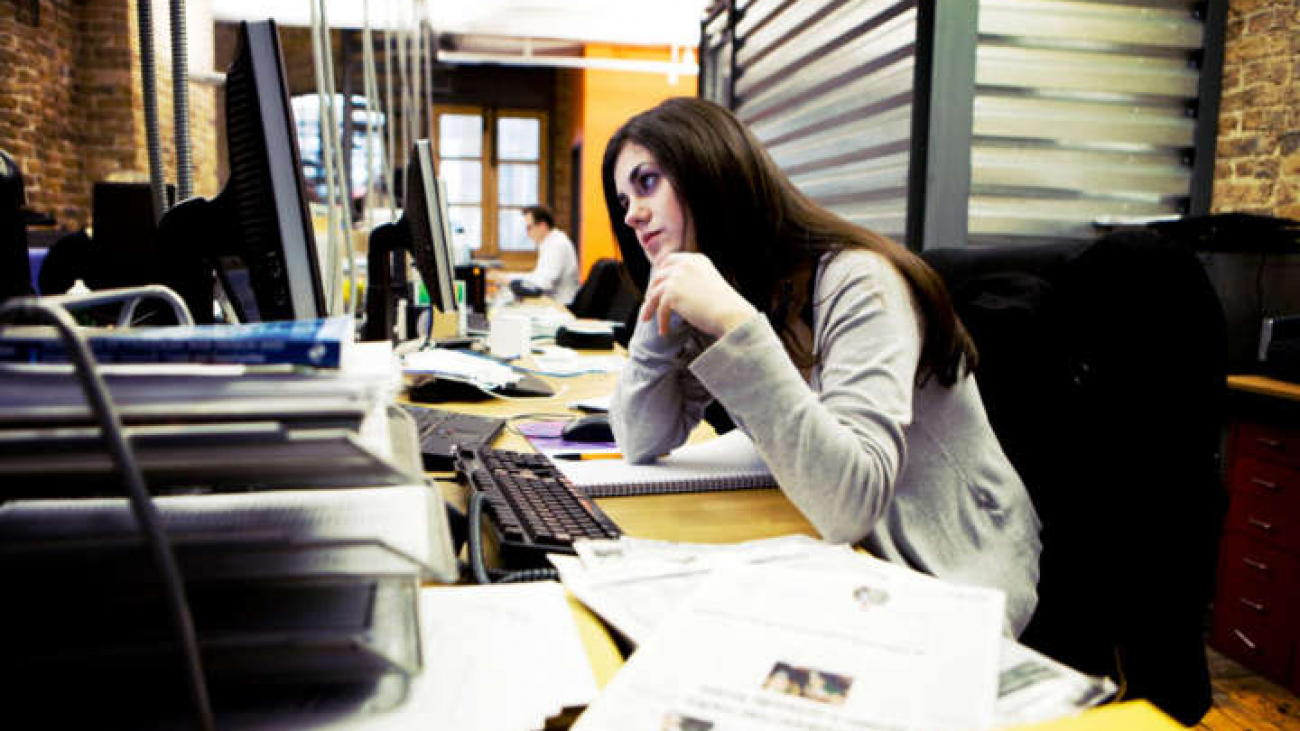Have you ever gotten into a friend’s car when it’s an absolute mess? The kind with empty bottles all over the floor, fast food bags strewn across the seats and hardly any place to sit?
Just think about how you feel when you are in this situation. The lack of space makes you feel cramped and it also hampers your ability to focus. Any attempts at an in depth conversation are just derailed by the McDonalds Happy Meal Box pressing up against your leg. Safe to say, it isn’t the best environment for achievement.
But nobody is really trying to achieve anything inside of a car except getting from point A to point B. But many people (maybe you) essentially have this environment in their workplace. Their desks are in disarray and hence they struggle to focus on work-related tasks.
Gallup recently completed a 142-country study, State of the Global Workplace, surveying approximately 180 million employees’ level of engagement at work. On average, the study found that a mere 13% of employees worldwide are engaged at work. Australia had the third highest engagement rate at only 29%. This is a surprisingly low number, but is also an understandable one once you look at it more deeply. Beyond the fact that there are a huge number of people that are unsatisfied with their jobs, many people are in work environments that don’t keep them engaged.
“Undoubtedly the physical environment would contribute much for better performance and productivity of employees and a firm” (Marpady & Singhe)
Your physical environment can have a huge impact on how you think and perform at work. This doesn’t just apply to the overall ‘tidiness’ of the workspace, but also the layout, colour scheme and more. So we are going to look at some of these areas and what you can do to improve them.
How to Optimise the Workplace for Performance
1. Tidiness
In simple terms, a cluttered desk is a disaster for your focus. A group of researchers at the Princeton University Neuroscience Institute did a study where they measured brain function on an MRI machine with both cluttered and uncluttered desks. The results showed a strong correlation between the ability to focus and the tidiness of the desk.
This is because when numerous objects are in your field of vision (even if you aren’t looking at them directly) they fight for neural attention. This means that even if you are looking at your laptop, the stack of papers and the plastic bags on your desk are distracting you from your work and diverting precious brain function away from your task. We recommend you remove any unnecessary items from your workbench.
2. Natural Lighting
According to a Clinical Endocrinology study done in 2012, 58% of Australians are Vitamin D deficient. This seems counter-intuitive because we live in such a sunny part of the world. But Australians have also had skin cancer PSA’s telling them to be wary of the sun for years. This is exactly why we don’t go outside and get the Vitamin D we need.
But, why are we talking about Vitamin D? Vitamin D has been linked to a variety of important processes in the human body, including mood and concentration. If your employees are sitting in a room with completely artificial light and no access to natural sunlight, chances are that their focus is going to be affected.
Try to have plenty of windows in the workplace. If this is not possible, then encourage employees to go outside and get some sun during the workday.
3. Temperature Control
A study by the Rensselaer Polytechnic Institute in 1992 found that when workers were given access to a company with more advanced temperature controls, their productivity increased 2.8%. We recommend that the temperature and humidity be always under control, if you want your employees to work more efficiently. About 21?C is considered the ideal temperature for focus.
4. Colour
We all know that colour can have an impact on how we think and feel. Dental surgeries are always white because it gives patients the feeling that the place is hygienic. Why is this the case? It is hard to say, but it is undeniable that the majority of people feel this way about the colour white and the same phenomenon occurs with different colours.
Leslie Harrington, executive director of The Color Association of The United States had some insightful perspectives on what colours create which moods in a Huffington Post article.
- Red evokes powerful emotions such as fear, anger and passion. Red is encouraged in small doses in the workplace. Coating an entire room in red is not recommended, as it can be an overwhelming colour in large amounts. The expression “seeing red” exists for a reason. However, smaller splashes of red can add some excitement and vibrancy to a room.
- Blue is a calming colour. Many therapists use pale blues in their offices in order to create a relaxing environment. “Psychologically, blue is the opposite of red — it lowers blood pressure,” says Harrington.
- Green creates a refreshing feeling. Most health food stores utilize green because of the link it has with nature. Green rooms can be great for creating a feeling of liveliness.
- Yellow is happiness! Adding yellow to a room has been associated with lifting the mood of workers and creating a more positive environment.
- According to Harrington, Orange creates a sense of action and creativity.
Your workspace is just one of many factors that influence your performance. Although things like diet and sleep are also highly important, optimising your workspace is just another thing you can do to get the edge at work. Try changing a few of these environmental factors and see if there is an improvement in yourself or your employees.



